Here is a Postgres code I created, it works. Is there a way to code it in a more efficient way? My goal is to get how much periods a given date falls from 2014-03-01. One period is a half-year starting from March or September.
I updated this code below on 2022-05-18 at 10:19 UTC+2
select date,
dense_rank() over (order by half_year_mar_sep) as period_index
from
(
select date as date,
case when extract(month from date) = 12 then (extract(year from date) || '-09-01')
when extract(month from date) in (1, 2) then (extract(year from date) - 1 || '-09-01')
when extract(month from date) in (3, 4, 5) then (extract(year from date) || '-03-01')
when extract(month from date) in (6, 7, 8) then (extract(year from date) || '-03-01')
else extract(year from date) || '-09-01'
end::date as half_year_mar_sep
from
(
select generate_series(date '2014-03-01', CURRENT_DATE, interval '1 day')::date as date
) s1
) s2
If I encapsulate the code above into select min(date), period_index from (<code above>) s3 group by 2 order by 1 then here is the result what I need:
